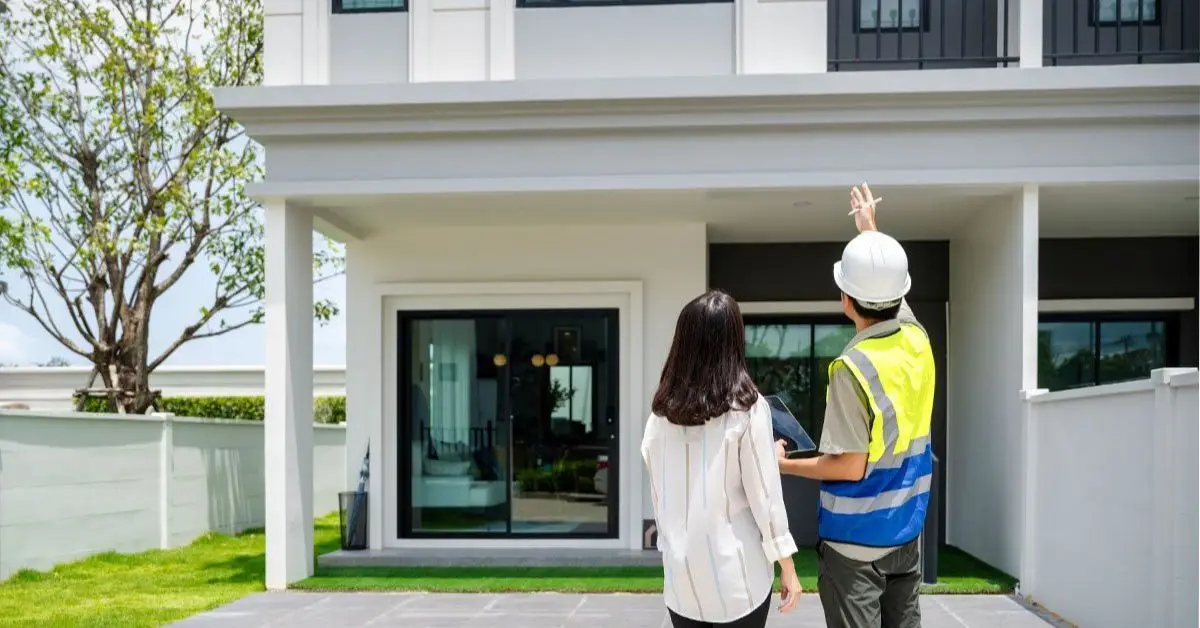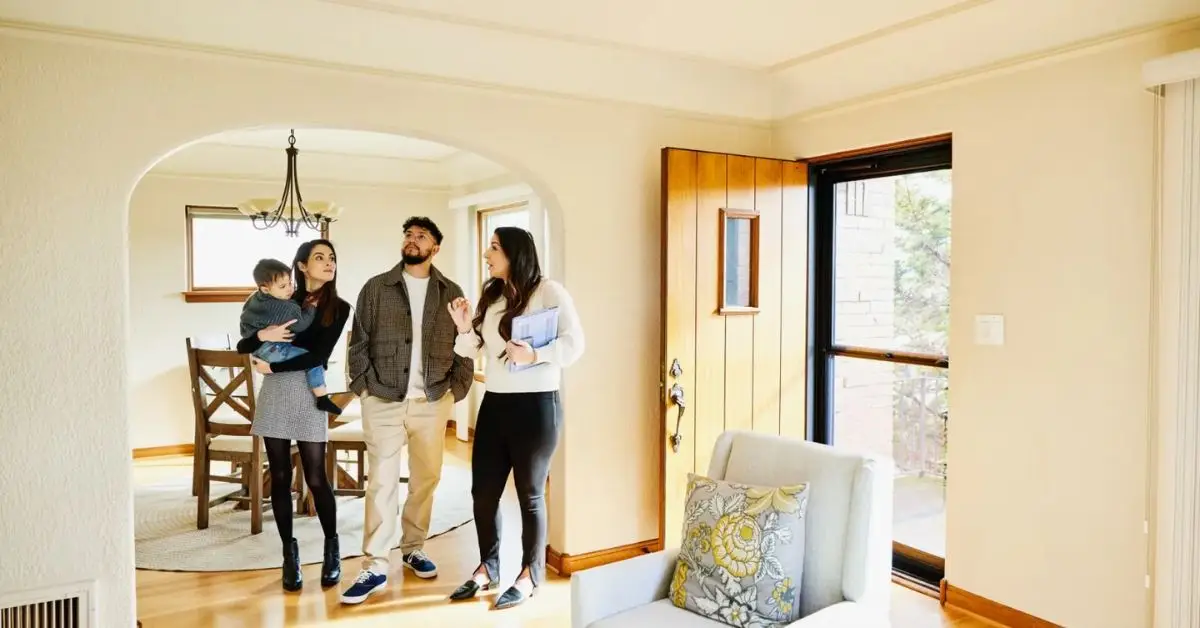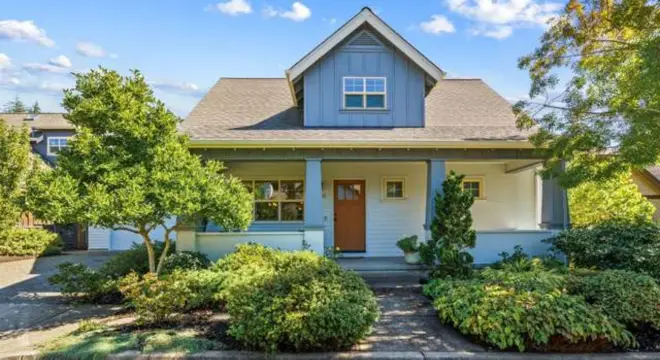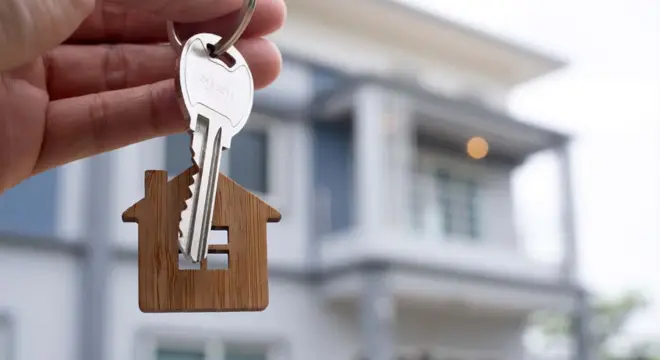9 Subtle Signs Buyers Are Falling in Love With Your Home
When I was selling my first home, I remember the quiet panic after every showing—Did they like it? Will they make an offer? But here’s what I learned over time (and after helping dozens of clients sell): buyers don’t always say what they’re thinking—but they almost always show it.
Most people focus on the offer. But the real clues show up way before the paperwork. If you know what to look for, you’ll spot the signs that someone’s falling for your place—from the way they walk through the hallway to how long they hang around the kitchen.
And here’s why this matters: homes that sell fast often have sellers or agents who pick up on these micro-signals early. They follow up at the right moment, nudge the buyer’s agent, or adjust their next showing strategy accordingly. You don’t need to guess—you just need to notice.
This article isn’t about generic tips. I’m going to walk you through real behaviors I’ve seen from buyers who were secretly (and sometimes obviously) impressed. Some of them might surprise you.
Let me ask you—when was the last time you watched someone tour your home and thought, “Wait… are they picturing their stuff here?”
That’s the kind of signal we’re diving into. Ready?
1. They Linger Longer Than Expected
One of the clearest signs a buyer is into your home? They don’t want to leave.
If a showing was supposed to last 15 minutes and they’re still poking around after 30, that’s not a time-management issue—it’s a good sign. Buyers who feel “meh” about a place are in and out. But when someone’s picturing their morning coffee in your dining room, they slow down.
I’ve had showings where buyers stayed so long, the next appointment had to wait outside. They walked the same hallway twice, looked out the backyard window like they already owned it.
The truth is, time equals interest. And when a buyer lingers, it usually means your home has hit them emotionally—and that’s the part you can’t fake with fresh paint.
Seller tip: If you notice this, have your agent follow up sooner than usual. Momentum matters, and interest cools fast if you wait too long.
2. They Ask Specific, Practical Questions
Not all questions are equal. Some are polite. Some are interested.
When a buyer starts asking things like, “How old is the roof?” or “Is there insulation in the attic?”—that’s when you lean in. Because now they’re evaluating the house like it might actually be the one.
I’ve had buyers ignore entire kitchens and just ask about school districts. That’s not random—it’s intentional. Serious buyers zoom in on the stuff that would affect their life if they moved in.
If they ask about HOA fees, trash pickup days, or whether the washer and dryer stay—that’s gold. They’re not just browsing. They’re calculating.
What this tells you: They’ve mentally moved from curiosity to logistics. That’s a buyer trying to eliminate friction—and maybe even prep for an offer.
Buyers who ask about the roof or insulation are often thinking ahead—so if you’re prepping your next home, don’t miss these 12 questions to ask a home inspector before you commit.
3. Their Body Language Says What Their Words Don’t
Here’s the thing about buyers: most won’t say they love your house out loud. But their body language almost always gives it away.
I’ve seen buyers try to play it cool, but you can tell everything by the way they relax their shoulders, smile in the living room, or pause a little too long in the primary bedroom. When they start nodding quietly to themselves or pointing things out to each other without talking much? That’s emotional connection.
Look for signs like:
- Taking photos (even if they pretend it’s “just to remember something”)
- Touching surfaces—counters, railings, doors
- Standing in one place and just looking
These aren’t random. These are instinctive actions from someone imagining themselves living there. That’s the kind of silent approval you want.
Why it matters: Most sellers only listen for words. But actions speak louder—and recognizing emotional cues lets you get ahead of the game without being pushy.
4. They Start Mentally “Moving In”
This is one of my personal favorites, because it’s such a strong emotional signal—and it’s easy to miss if you’re not paying attention.

When buyers start saying things like:
- “Our couch would fit perfectly here.”
- “This would be Sarah’s room.”
- “We could knock that wall down later.”
—they’re not touring anymore. They’re decorating.
This moment, when they shift from “Is this house worth it?” to “How would we live here?”, is pure gold. It means the home has made it into their imagination. And that’s where all buying decisions really begin.
Even subtle phrases like “I like how open it feels” or “This kitchen’s more us than the last one” are micro-commitments. They’re aligning your house with their identity—and that’s the emotional nudge that often leads to offers. If they’re already imagining life in your home, it likely means they’ve already explored questions every first-time buyer should ask—and your home is checking a lot of boxes.
What to do next: If you hear this kind of talk, don’t interrupt it. Let them picture. Let them dream. Then let your agent follow up with a soft-touch check-in that keeps that emotional thread alive.
5. They Start Noticing the Small Flaws
This one trips up a lot of sellers. You might hear a buyer say, “That cabinet handle’s loose,” or “We’d probably repaint this wall.” And your gut reaction? Panic.

But in many cases, nitpicking is a sign of serious interest.
Here’s why: when someone starts thinking about what they’d change, it often means they’re already picturing ownership. They’re mentally committing enough to imagine how they’d customize the space.
Think about it—nobody critiques a place they have zero interest in. If a buyer is casually suggesting where they’d hang their art or complaining about the faucet, they’ve already accepted the foundation. Now they’re fine-tuning.
And yes, some buyers are just hyper-critical. But in most situations, light critique is a positive—it means they care enough to imagine the next step.
Seller insight: Don’t get defensive. Listen for what they’re really saying underneath the surface: “I could live here, if…” That’s a buyer on the edge of making a decision.
6. The Agent Starts Acting Like a Buyer Too
A sharp agent is like a mirror—you can often read the buyer’s mindset through their behavior.
If the agent goes from being quiet to suddenly engaged—asking questions about disclosures, asking if you’ve had other offers, or checking in after the showing—that’s not random. It usually means their client is interested, and they’re doing due diligence before advising next steps.
In some cases, the buyer might play it cool, but their agent starts feeling out timelines, asking how flexible you are on price, or even hinting at how fast their client can move.
I’ve seen showings where the buyer barely said a word, but their agent called two hours later asking if the home would appraise at asking. That’s a strong signal.
Key takeaway: When an agent starts digging into practical details or logistics, they’re prepping their client to act. Don’t wait for a dramatic reaction from the buyer—sometimes it’s the quiet follow-up from their agent that tells you everything.
7. They Circle Back With a Second Showing (or Bring Someone)
The first showing is emotional. The second one is strategic.

When a buyer asks to come back—or shows up again with a friend, partner, or even a parent—it means they’re taking things seriously. They’re no longer just “interested.” They’re seeking confirmation.
Sometimes, they’ll bring someone to validate what they already feel. Other times, they’re trying to see if their excitement holds up a second time. Either way, it means your home passed the gut-check, and now they’re doing homework.
I’ve seen buyers return with measuring tapes, ask to see the basement again, or ask about where the sun sets. These aren’t small talk questions. They’re pre-offer behaviors.
Seller perspective: A second showing is your green light to prepare. Get the house just as polished—maybe even more so—and have your agent subtly highlight the strengths that mattered most the first time.
8. They Start Exploring the Neighborhood on Their Own
Buyers who are on the fence rarely care about what’s around your house. They finish the showing and drive off. But when someone starts walking the street, checking out the view from the driveway, or asking if the neighbors are friendly—that’s a very specific shift.
They’re not just evaluating the house anymore. They’re evaluating life in that location.
I’ve seen buyers walk the block, peek into back alleys, or sit in their car for ten minutes after a showing. They’re listening for noise, watching foot traffic, or checking how far the nearest coffee shop really is. And no, they won’t always say it out loud.
When someone starts imagining their life on your street, that’s the quiet beginning of ownership.
Smart move: Mention walkability, community features, or recent local upgrades in your listing—or have your agent bring it up. Sometimes it’s not the granite countertops that close the deal. It’s the fact that the local park has a Saturday farmers market.
Here we go with Section 10 and Section 11 — diving into urgency behaviors and finally plugging the SERP gap with real, trust-building data most articles completely skip.
9. They Try to See It Early — or Before It’s Even Officially Listed
When a buyer wants to tour your home as soon as it hits the market—or even before—pay close attention. That level of urgency almost always means one thing: they’ve either been house hunting for a while or they’ve already lost out on one they loved.
In both cases, they’re emotionally ready to move, and your home checks the boxes.
I’ve had buyers ask to see a property the morning it listed, or show up with their agent 15 minutes after we uploaded photos. That kind of speed isn’t casual browsing. That’s “we’re ready to make a move” energy.
You might not get a love letter or instant offer, but when someone jumps to see your home faster than anyone else, you’re dealing with someone who’s already done the mental work. They’re not wondering “if”—they’re figuring out “how.”
Takeaway for sellers: Fast interest is fragile. Don’t sit on a strong showing assuming more will follow. If someone comes in hot, that’s your chance to make the deal clean, simple, and fast.
The Features That Spark Buyer Emotion (and Data to Back It Up)
Here’s the truth: most articles stop at “watch for signs.” But they don’t tell you how to create those signs in the first place.
If you want buyers to fall for your home—to linger, imagine, ask questions—then your space needs to trigger emotional response. That doesn’t happen by chance. It happens by design.
Here’s what the data says:
- Staged homes sell 30%–50% faster and often above asking price – Wikipedia – Home Staging
- South-facing gardens can add up to £5,800 ($7,400) to your home’s value, especially in summer markets – MoneyWeek
- Buyers consistently gravitate toward homes with: neutral paint, natural light, defined spaces, and even smells like citrus or fresh baking – Real Simple
What does this mean for you? It means that the way you present your home has a direct effect on how buyers behave during the showing.
They’re more likely to show the signs we’ve covered—lingering, personalizing, re-visiting—if the space already feels livable, warm, and emotionally welcoming. Before you make your next move, be sure to avoid common buying and selling mistakes that could cost you time, money, or the deal.
What to do now: Before your next showing, audit your space through a buyer’s lens. Does it feel clean but not cold? Is there a spot where someone could picture reading a book or having coffee? Those are the micro-triggers that turn “I like it” into “I want it.”
What You Should Do Next: A Seller’s Quick Playbook
Reading signs is one thing. Responding to them the right way is where the real leverage is.
If you’re seeing these behaviors—buyers lingering, asking questions, acting emotionally invested—don’t just wait and hope they come back. Here’s how to use that momentum before it fades:
1. Document What You See (Or Have Your Agent Do It)
After each showing, jot down:
- How long they stayed
- What they commented on
- Who they brought with them
- Any follow-up questions from their agent
It’s easy to forget this stuff, but these details help you recognize patterns—and signal which buyers might be most serious.
2. Follow Up While Emotion Is Still Fresh
The hours after a showing are critical. If the buyer seemed interested, have your agent check in quickly. Not to pressure, but to keep the energy alive.
Even a light follow-up like, “Any questions we can answer?” can make a buyer feel seen—and more likely to move forward.
3. Make Subtle Tweaks That Trigger Stronger Buyer Responses
If you noticed buyers reacting well to the lighting, furniture layout, or how the kitchen felt—lean into that. Adjust your staging or listing photos to highlight those strengths.
On the flip side, if multiple buyers nitpicked the same small issue, fix it. It removes friction and improves emotional flow.
4. Update Your Agent Strategy
Make sure your agent:
- Tracks buyer behavior across showings
- Shares feedback transparently
- Knows when to push for a second showing
- Recognizes when an early offer might be on the table
Agents who understand micro-signals are better at negotiating, timing counteroffers, and closing deals fast.
Too many sellers miss out on solid offers simply because they didn’t recognize interest early—or they waited too long to act on it.
The goal here isn’t to chase buyers. It’s to stay one step ahead of them, read their signals, and respond like a pro.
If You’re Noticing These Signs, You’re Closer Than You Think
Selling a home isn’t just about square footage or finishes. It’s about connection. And when a buyer starts acting a little differently—staying longer, imagining where their couch will go, asking quiet but specific questions—they’re not just browsing anymore. They’re deciding.
You don’t need to guess or second-guess. These signals are real, human, and consistent.
If you’ve noticed even a few of these signs during showings, chances are, you’re not far from an offer. And if you haven’t seen them yet, now you know exactly what to watch for—and how to set the stage to make those moments happen.
So, think back to your last showing—
- Did they linger? Did they talk about “where the bed would go”?
- What do you think they were really saying?
Looking for more smart tips to get your home sold faster? Visit Build Like New for real insights, no fluff.
Disclaimer: This article is for informational purposes only and does not constitute legal, financial, or real estate advice. Buyer behavior can vary based on individual circumstances and market conditions.


